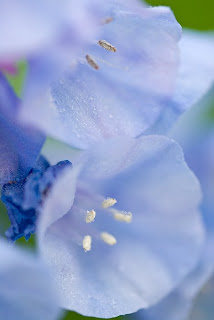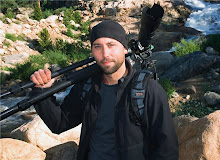Wednesday, April 30, 2008
Potomac River HDR
Monday, April 28, 2008
Dogwood HDR


Dogwood and Redbud- single exposure
Sunday, April 27, 2008
Creative Flower Photography One Day Workshop at Sherwood Gardens
I started shooting as soon as I arrived making some multiples and overlays of the gardens. If you have never been to Sherwood Gardens before, I definitely recommend it. In the last 2 weeks of April the gardens come to life with a very impressive display of Tulips, Azalea and many flowering tree's.
After the group arrived we started shooting macro and close-ups before the wind began to toss the tulips about. We then went into making multiples and swipes of the many tulip displays. I ran into Barbara Williams, a Baltimore based photographer who is very active in the Baltimore Camera Club. I was scheduled to speak at the Baltimore Camera Club on Thursday, but was had to cancel due to a death in the family. I will be moving the speaking engagement to later in May.
I will also be speaking and judging at the NIH Camera Club on May the 10th.
Here is a small selection of images I made as examples for the group. Click on any image for a larger view.






Tuesday, April 22, 2008
Spring has Sprung !





Thursday, April 17, 2008
Mouintain Trail Photography Workshops

I just wanted to let everyone know that I have been asked to lead photography workshops and tours through Mountain Trail Photography Workshops. Mountain Trail Press which was started by Jerry Greer and Ian Plant have expanded their expertise into the field of location tours and instructional workshops in some of the most beautiful and scenic areas in the United States. I have decided to run all of my location workshops and tours through Mountain Trail in 2009. The remainder of my location workshops for 2008 will also be hosted and administered through Mountain Trail. am very excited and honored to be working along some of the best and brightest nature photographers in the Eastern United States.
Monday, April 14, 2008
Great Falls Spring Workshop Conclusion and other spring workshop listings
On a side note, I still have spots available for this weekend class on Adobe Lightroom at Meadowlark Gardens. Click herefor more details and payment options.
Also, our one day workshop at Sherwood Gardens in Baltimore Maryland still has a few spots available. Sherwood has an amazing display of Tulips and flowering trees and can not be beat at this time of the year. We will be working on creative techniques in macro and abstract imaging. Click herefor more details and payment options.
Here are a few of my keepers from the workshop. Enjoy, Joe.
Click on any image below for a larger view.




Wednesday, April 9, 2008
Great Smokey Mountains



Click on any image for a larger view.
Monday, April 7, 2008
“Multiples Exposure” – Technique for creating impressionistic abstract images
The techniques I have learned over the years include panning, swirling and zooming multiple exposures. Many of these techniques can be replicated in computer software such as Adobe Photoshop, but I prefer to create the vast majority of my abstract images in camera. I feel it has a more fluid and organic feel than multiples created in post capture software. Pre-visualization is important and will come with time. As you begin to develop your personal vision, you will recognize subject matter and techniques that work well together. Be patient and keep shooting and experimenting and you will begin to see the image before you ever trip the shutter. Let’s get going with some tips and techniques to get you started in the world of abstract impressionist photography.
Metering the Image/Pre-visualization
I find that overcast light works best for creating multiples, although the warm soft light of sunrise or sunset can also be quite nice for multiples and montage effects. Working under these lighting conditions is quite easy as far gaining exposure is concerned. I like to keep my camera set on aperture priority and 3d matrix metering. Using a digital camera will allow you to take a test exposure and look at your histogram to see where your exposure falls. Changes can then be made using the (+/-) compensation on your camera. Its really that easy. In the past, some amount of math and compensation was needed for each individual exposure when stacking images in camera. With the multiple exposure functions in most modern digital cameras, Auto Gain is built into the custom function and the camera will take care of this compensation for you.
Multiple Exposure Techniques

An example of a 10 exposure multiple of flowers,
moving the camera in a random movement for each shot
Panning – Moving the camera up/down or left/right over the course of two or more multiple image exposures. Make sure to follow the natural flow of the subject matter. For example, when shooting trees, you would want to move the camera in and up or down motion for each shot.

An example of creative Panning at 2 second, moving
the camera in an upward motion.
Zooming – Using a zoom lens it is possible to make beautiful bursts of color while racking the zoom in/out during the course of exposure. It is best to use a shutter speed in the range of 1/2 second as far up to 2 seconds the majority of the time. It helps me to begin the zooming before I trip the shutter in order to have a smooth and even effect throughout the course of the exposure.

An example of Multiple Zooming, Zooming the lens
out for each exposure - a total of 6 shots
Multiple Zoom - Same as before, except using the multiple exposures function. For each image in the multiple, simply zoom in or out and then trip the shutter. Remember to refocus the image on each shot.

Another example of multiple exposure panning. I used
a 3 way pan/tilt head for acurate movement up and down
Swirling - Moving the camera in a circular motion around the subject. This technique is best executed using a tele-photo lens with a tripod collar attached to the body of the lens. With the lens mounted on a tripod, loosen the lens color and move the camera in a clockwise or counterclockwise rotation for each image. To keep a central point of focus through the image, try slightly recomposing the subject in the same position of the frame for each shot.

For this shot, I rotated the camera in a clockwise
direction for each shot over the coure of 8 images
Good luck and have fun.




























